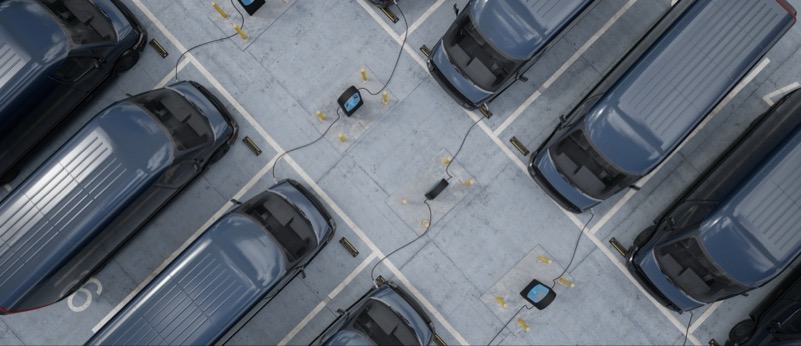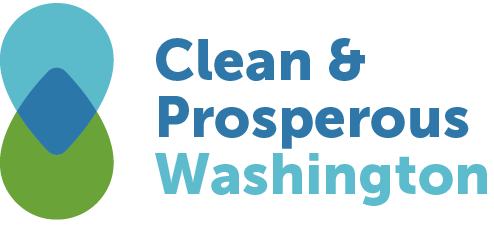Trucks can deliver clean air
Trucks – medium- and heavy-duty vehicles – account for a disproportionate share of emissions. Per Climate Solutions, in Washington state diesel trucks, buses and delivery vans are only about 10% of vehicles on the road, yet they account for “30% of climate pollution from transportation, 50% of particulate matter pollution, and 60% of NOx pollution”. By going electric, trucks can deliver the benefits of clean air faster than any other segment of the transportation sector.

We support two programs that are helping truck operators and fleet managers move into the zero-emissions fast lane: The Washington State Department of Transportation’s Zero-Emission MHD Voucher Program, and the Breaking Barriers Collaborative’s Fleet Decarbonization Accelerator Program.


This week, Clean & Prosperous WA joined over 50 organizations, including trucking associations, truck manufacturers, chambers of commerce, cities, counties, and non-profits, to deliver a letter to legislators in Olympia calling on the Legislature to recommit to WSDOT’s Zero-Emission MHD Voucher Program. Our “John Hancock” was nestled between the Certified Electrical Workers of Washington and Climate Pierce County. The letter strongly advocates for legislators to boost this vital program with funds from Climate Commitment Act revenues in this biennium’s budget.
Medium- and heavy-duty (MHD) vehicles, including buses, trucks, and delivery vans, are responsible for about 30% of the state’s on-road greenhouse gas emissions, and these emissions have more than doubled since 1990 due to factors such as increased e-commerce and a growing population. Our diverse coalition of business, labor, and environmental organizations agree that we will need robust investments in zero-emission medium- and heavy-duty vehicles and infrastructure to cut these emissions at scale and to meet the state’s ambitious emission targets.
(Read the full letter, and see the full list of signatories HERE.)
It was on a Clean & Prosperous Institute study mission to California that we learned how effective vouchers are in accelerating truck decarbonization. California’s HVIP program reports a healthy return on investment in terms of additional dollars of other public and private spending redirected from traditional technologies to clean technologies — over $3 for every $1 of voucher investment.
Lessons learned in Sacramento informed Washington’s version. The improvements built into WSDOT’s design earned high marks from Rivian’s Hannah Steinweg, who spoke about the program at the Clean & Prosperous Institute’s recent Future of Carbon Policy Forum.
She said, “there’s a positive difference between California’s HVIP and the Washington medium- and heavy-duty incentive program. Right now, California’s program does not include vehicles that aren’t designed exclusively for commercial use. Our R1 and other electric trucks are class 2 fleet. They are technically medium-duty, and they are also used for fleet purposes. As you noted, your truck either is exclusively just for your business, whether you are a contractor or whether you use it in rural Washington. It also can be dual use, and so we have seen many, many fleet customers choose to not go electric because they cannot access an incentive in California. Those who developed Washington’s program took that feedback and included vehicles that are not exclusively designed for commercial use in this medium- and heavy-duty incentive program, if it is being used at all for commercial purposes, and that is going to really, really help small businesses adopt these clean vehicles in their fleets.”
It’s estimated that more than a third of all pickups are used for commercial purposes.
Just as a driver feels an immediate jolt forward when pressing the accelerator of an electric truck, Washington state’s progress to net-zero emissions will jump ahead with speed if legislators concur with the proposed investment in WSDOT’s Zero-Emission MHD Voucher Program.
If you’d like to add your voice in support of funding the ZEV MHD Voucher Program, you may contact your representatives using THIS LINK.
If there were any question about the “demand side” of the voucher equation, that could be answered by looking at the success of the Breaking Barriers Collaborative’s Fleet Decarbonization Accelerator Program.

That program has already graduated over 100 decision-makers from private businesses and public organizations, and recently welcomed its fifth cohort to create actionable fleet decarbonization plans. A new Electric School Bus Accelerator will launch in April.
All of the participants begin the course with more questions than answers, and many are uncertain about the budget, timeline, or process required to electrify their fleet. Twelve weeks later, armed not only with answers, but also with concrete step-by-step plans – and soon with voucher applications – the fleet managers finish the program ready to charge forward.
This video provides a brief overview of the program:
With vouchers from the state, accelerators from the Collaborative, and new delivery vans, pickups, and semis from truck manufacturers, Washington will be on the way to achieving better air quality than ever.

